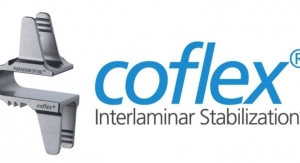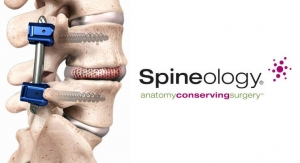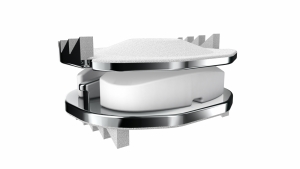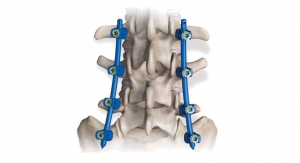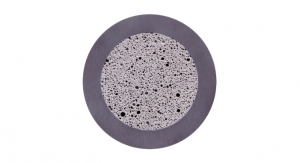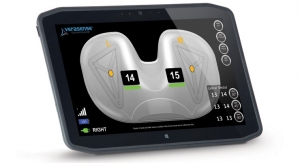Margeaux Rogers, Senior Associate, Regulatory Affairs, Musculoskeletal Clinical Regulatory Advisers LLC11.30.18
The use of independent data monitoring committees is becoming increasingly prevalent in the U.S. medtech industry. The FDA outlines these groups and their operation in a 12-year-old guidance due to expire at the end of this year. However, the composition of these groups, their respective responsibilities, and how best to make them work for a particular study design is often unclear.
Purpose of Data Monitoring Committees
While sponsors are required to monitor studies, the FDA has increasingly requested independent reviews of study data by data monitoring committees (DMCs). In MCRA’s recent experience with device trials, FDA has requested the use of one or more DMC groups for all premarket approval and 510(k) submissions with clinical data, even in cases where independent oversight was not required in the original IDE.
In device studies, DMCs take the form of a medical monitor, clinical events committee (CEC), and data safety monitoring board (DSMB). Whether used separately or in parallel, these groups are necessary to ensure validity and scientific merit of the trial by providing additional, independent assessments of safety events. DMCs also ensure reliable data pooling across multi-center trials and comparisons with historical controls or published data.
DMCs generally are comprised of independent experts who are convened to oversee and ensure the most rigorous study conduct and data validity, though each group serves a different role. Depending on the study design and the device’s risk-benefit profile, the study may not require oversight from all three groups. For instance, a total disc replacement study with a straightforward statistical plan typically only requires a CEC. It is important to understand the different types of DMCs to develop an appropriate plan for the study design. The traditional functions of these groups and least burdensome considerations for DMC assembly are described below.
Medical Monitor
Medical monitors oversee the clinical study’s conduct, including the safety of all enrolled study subjects. An ideal Medical Monitor is a well-respected key opinion leader in the medical community with experience in the target therapeutic area. The medical monitor serves as a resource to the trial sponsor, clinical research organization (if applicable), and investigational sites to discuss and provide input on study-related topics. The monitor also may serve as a resource to the DSMB or CEC by answering questions about patient eligibility, concomitant treatments/medications, and any potential safety events.
Device studies typically employ a single medical monitor who’s involved for the duration of the study on an as-needed basis. The medical monitor’s responsibilities may include reviewing protocol waiver requests, discussions with sponsors and sites regarding retraining of sites, or surgeon-to-surgeon discussion of technique. Medical monitors also help the trial sponsor implement DSMB recommendations like site conduct changes. Most importantly, medical monitors may serve as independent reviewers of serious adverse events to determine if they should be reported to the IRB or FDA.
Above all, medical monitors act as an independent, qualified intermediary between site investigators and the CRO or sponsor. The medical monitor lets the sponsor be one step removed from the decision-making process involving enrollment decisions and AE definitions, and allows for physician-to-physician discussion when retraining is necessary (for the study or surgical techniques).
Clinical Events Committee
The CEC is an independent committee of medical experts that reviews specific information obtained from clinical trial subjects. Its primary role is to review and adjudicate individual clinical events based on protocol-specific definitions that may be subject to interpretation by the sites. CEC review ensures that events critical to the analysis of study results are assessed in a uniform manner, eliminating the variability associated with site-based event evaluation. This facilitates reliable data pooling within a trial and improves the validity of comparisons with published data.
CECs review event level data with the intent of confirming or adjudicating the investigators’ classification. In some cases, the CEC may assign classifications the investigator did not make. For instance, in cases where adverse event severity was not captured in the study, the CEC may assign severity. Common endpoints reviewed include adverse events, secondary surgical interventions, and protocol deviations. In addition to study endpoints, the CEC can provide an assessment of other events or areas of concern at the request of the DSMB or sponsor.
Data Safety Monitoring Board
DSMBs are responsible for ensuring study participants’ safety and monitoring the overall conduct of the clinical trial. The DSMB evaluates the risks and benefits to subjects based on accrued and available data, and advises the sponsor of any safety concerns and other issues important to the study’s safe conduct. In particular, the DSMB advises about the continuing safety of current participants and those yet to be recruited, as well as the trial’s continuing validity and scientific merit.
A DSMB is an independent, multidisciplinary group composed of at least one clinician with experience specific to the therapeutic area, at least one statistician experienced in device trial statistics, and an additional member with relevant expertise. DSMBs identify study-wide issues through review of aggregate study data and detailed safety information. Following review, the group provides a recommendation to study sponsors to terminate the study, continue with modification, or continue without modification.
This group is commonly used in early feasibility studies, adaptive trial designs, or for devices with unique safety risks. In early feasibility or first-in-man studies, DSMBs may review data to determine feasibility or futility of the treatment/study. In adaptive study designs, DSMBs may review data to make enrollment recommendations or to make an early claim to end enrollment. DSMBs may also be tasked with reviewing particular device-related adverse events to ensure they do not exceed a predefined rate, as defined in the study “stopping rules.” The frequency and scope of DSMB review should be tailored to the specific study design.
Member Selection
While varied in composition and scope, each oversight committee serves an advisory role. As such, members should be seasoned experts in the therapeutic area or their respective area, free of conflicts of interest that would jeopardize their independence or judgment, and should be committed to serving in their respective role for the duration of the trial. MCRA recommends keeping location and time zone in mind when recruiting group members. It is best to find a medical monitor who is in the same time zone as the trial sponsor or the majority of study sites to facilitate timely study communication between the respective parties. MCRA has found in-person CEC meetings and WebEx DSMB meetings to be most successful. To facilitate in-person meetings, we typically recruit members in the same metro area. While this is not necessary for WebEx meetings, it is important to keep time zones in mind as this affects scheduling availability.
Integrated Approach to Preparing for DMC Review
When preparing for a DMC data review, it is important to assemble a strong support team that includes key members of the data management team, biostatistics group, monitors, and project managers. Data planned for CEC review should be fully monitored and free of all queries. Adverse events should be resolved at the time of review (resolved, or ongoing with no further expected improvement) or the patient should have exited the study. Preparing for safety oversight meetings requires source documentation from sites and complete narratives of all safety events subject to review. Data management is needed to identify eligible events, export data, and input/house adjudication data. Study statisticians play a large role in data presentation to DSMB groups as well as table development for CEC review. Data planned for DSMB review should have been previously reviewed by the CEC, if applicable. Enrollment thresholds or adverse event rates may drive DSMB review timing. Strong project management is necessary to coordinate the various groups and activities.
Least Burdensome Considerations
Employing all three DMCs can be incredibly burdensome to study sponsors in terms of both clinician consulting costs and internal human resources. Steps can be taken while organizing committees to reduce this burden. The medical monitor role can also be performed by the sponsor’s internal medical director or study’s lead investigator. As stated previously, studies of devices with well-defined risk-benefit profiles and straightforward statistical plans may not need DSMB review. Studies required to have DSMBs can pre-specify annual review frequency unless triggered by certain events. Similarly, the CEC process can be scaled down unless otherwise directed by FDA. Sponsors can propose a limited review of adverse events with certain classes, severities, or relationships. CECs may also set precedents to facilitate review and adjudication of common events.
While it is easier to outline and execute a DMC plan early in the IDE process, these programs can be implemented after study start-up or retrospectively. MCRA can help sponsors develop the least burdensome DMC oversight program for their studies by determining which safety oversight groups are needed, selecting members of safety oversight groups, and providing full project management.
Margeaux Rogers is a senior regulatory associate at MCRA, primarily focusing on developing regulatory strategies and submissions for FDA, as well as international regulatory agencies. She has extensive knowledge of regulatory pathways with experience developing PMAs, IDEs, 510(k)s, and clinical evaluation reports, with a focus in orthopedic devices. Rogers also frequently manages CECs and DSMBs for study sponsors.
Purpose of Data Monitoring Committees
While sponsors are required to monitor studies, the FDA has increasingly requested independent reviews of study data by data monitoring committees (DMCs). In MCRA’s recent experience with device trials, FDA has requested the use of one or more DMC groups for all premarket approval and 510(k) submissions with clinical data, even in cases where independent oversight was not required in the original IDE.
In device studies, DMCs take the form of a medical monitor, clinical events committee (CEC), and data safety monitoring board (DSMB). Whether used separately or in parallel, these groups are necessary to ensure validity and scientific merit of the trial by providing additional, independent assessments of safety events. DMCs also ensure reliable data pooling across multi-center trials and comparisons with historical controls or published data.
DMCs generally are comprised of independent experts who are convened to oversee and ensure the most rigorous study conduct and data validity, though each group serves a different role. Depending on the study design and the device’s risk-benefit profile, the study may not require oversight from all three groups. For instance, a total disc replacement study with a straightforward statistical plan typically only requires a CEC. It is important to understand the different types of DMCs to develop an appropriate plan for the study design. The traditional functions of these groups and least burdensome considerations for DMC assembly are described below.
Medical Monitor
Medical monitors oversee the clinical study’s conduct, including the safety of all enrolled study subjects. An ideal Medical Monitor is a well-respected key opinion leader in the medical community with experience in the target therapeutic area. The medical monitor serves as a resource to the trial sponsor, clinical research organization (if applicable), and investigational sites to discuss and provide input on study-related topics. The monitor also may serve as a resource to the DSMB or CEC by answering questions about patient eligibility, concomitant treatments/medications, and any potential safety events.
Device studies typically employ a single medical monitor who’s involved for the duration of the study on an as-needed basis. The medical monitor’s responsibilities may include reviewing protocol waiver requests, discussions with sponsors and sites regarding retraining of sites, or surgeon-to-surgeon discussion of technique. Medical monitors also help the trial sponsor implement DSMB recommendations like site conduct changes. Most importantly, medical monitors may serve as independent reviewers of serious adverse events to determine if they should be reported to the IRB or FDA.
Above all, medical monitors act as an independent, qualified intermediary between site investigators and the CRO or sponsor. The medical monitor lets the sponsor be one step removed from the decision-making process involving enrollment decisions and AE definitions, and allows for physician-to-physician discussion when retraining is necessary (for the study or surgical techniques).
Clinical Events Committee
The CEC is an independent committee of medical experts that reviews specific information obtained from clinical trial subjects. Its primary role is to review and adjudicate individual clinical events based on protocol-specific definitions that may be subject to interpretation by the sites. CEC review ensures that events critical to the analysis of study results are assessed in a uniform manner, eliminating the variability associated with site-based event evaluation. This facilitates reliable data pooling within a trial and improves the validity of comparisons with published data.
CECs review event level data with the intent of confirming or adjudicating the investigators’ classification. In some cases, the CEC may assign classifications the investigator did not make. For instance, in cases where adverse event severity was not captured in the study, the CEC may assign severity. Common endpoints reviewed include adverse events, secondary surgical interventions, and protocol deviations. In addition to study endpoints, the CEC can provide an assessment of other events or areas of concern at the request of the DSMB or sponsor.
Data Safety Monitoring Board
DSMBs are responsible for ensuring study participants’ safety and monitoring the overall conduct of the clinical trial. The DSMB evaluates the risks and benefits to subjects based on accrued and available data, and advises the sponsor of any safety concerns and other issues important to the study’s safe conduct. In particular, the DSMB advises about the continuing safety of current participants and those yet to be recruited, as well as the trial’s continuing validity and scientific merit.
A DSMB is an independent, multidisciplinary group composed of at least one clinician with experience specific to the therapeutic area, at least one statistician experienced in device trial statistics, and an additional member with relevant expertise. DSMBs identify study-wide issues through review of aggregate study data and detailed safety information. Following review, the group provides a recommendation to study sponsors to terminate the study, continue with modification, or continue without modification.
This group is commonly used in early feasibility studies, adaptive trial designs, or for devices with unique safety risks. In early feasibility or first-in-man studies, DSMBs may review data to determine feasibility or futility of the treatment/study. In adaptive study designs, DSMBs may review data to make enrollment recommendations or to make an early claim to end enrollment. DSMBs may also be tasked with reviewing particular device-related adverse events to ensure they do not exceed a predefined rate, as defined in the study “stopping rules.” The frequency and scope of DSMB review should be tailored to the specific study design.
Member Selection
While varied in composition and scope, each oversight committee serves an advisory role. As such, members should be seasoned experts in the therapeutic area or their respective area, free of conflicts of interest that would jeopardize their independence or judgment, and should be committed to serving in their respective role for the duration of the trial. MCRA recommends keeping location and time zone in mind when recruiting group members. It is best to find a medical monitor who is in the same time zone as the trial sponsor or the majority of study sites to facilitate timely study communication between the respective parties. MCRA has found in-person CEC meetings and WebEx DSMB meetings to be most successful. To facilitate in-person meetings, we typically recruit members in the same metro area. While this is not necessary for WebEx meetings, it is important to keep time zones in mind as this affects scheduling availability.
Integrated Approach to Preparing for DMC Review
When preparing for a DMC data review, it is important to assemble a strong support team that includes key members of the data management team, biostatistics group, monitors, and project managers. Data planned for CEC review should be fully monitored and free of all queries. Adverse events should be resolved at the time of review (resolved, or ongoing with no further expected improvement) or the patient should have exited the study. Preparing for safety oversight meetings requires source documentation from sites and complete narratives of all safety events subject to review. Data management is needed to identify eligible events, export data, and input/house adjudication data. Study statisticians play a large role in data presentation to DSMB groups as well as table development for CEC review. Data planned for DSMB review should have been previously reviewed by the CEC, if applicable. Enrollment thresholds or adverse event rates may drive DSMB review timing. Strong project management is necessary to coordinate the various groups and activities.
Least Burdensome Considerations
Employing all three DMCs can be incredibly burdensome to study sponsors in terms of both clinician consulting costs and internal human resources. Steps can be taken while organizing committees to reduce this burden. The medical monitor role can also be performed by the sponsor’s internal medical director or study’s lead investigator. As stated previously, studies of devices with well-defined risk-benefit profiles and straightforward statistical plans may not need DSMB review. Studies required to have DSMBs can pre-specify annual review frequency unless triggered by certain events. Similarly, the CEC process can be scaled down unless otherwise directed by FDA. Sponsors can propose a limited review of adverse events with certain classes, severities, or relationships. CECs may also set precedents to facilitate review and adjudication of common events.
While it is easier to outline and execute a DMC plan early in the IDE process, these programs can be implemented after study start-up or retrospectively. MCRA can help sponsors develop the least burdensome DMC oversight program for their studies by determining which safety oversight groups are needed, selecting members of safety oversight groups, and providing full project management.
| Medical Monitor | CEC | DSMB | |
| Recommended Composition | 1 member: clinician or key opinion leader in therapeutic area | 3 members: clinicians (with option for one radiologist) specializing in therapeutic area | 3 members: at least one clinician with experience in the therapeutic area and one biostatistician experienced in clinical trial design |
| Primary Responsibility | Resource for CRO, sites and sponsor with recommendation to modify site or study level conduct. Resource for DSMB/CEC as requested. | Review of individual safety events with recommendation to adjudicate event classification | Review of aggregate analyses with recommendation to terminate study, continue with modification, or continue without modification |
| Communication Plan | Receives questions from and provides recommendations to sponsor/CRO, study investigators, DSMB or CEC | Receives review materials for individual events from DMC project manager and provides adjudication data to DMC project manager for entry into database and communication to study sites | Receives analyses from statistical group, provides recommendations to sponsor |
| Timing of Interaction | Communication as requested | Quarterly, or as needed based on number of accrued events | Annually, semi-annually, or upon completion of each interim safety analysis |
| Common Tasks | Enrollment waivers; memos to study investigators to clarify protocol or other aspects of study conduct | Review of AEs, SSIs, neurologic deterioration, protocol deviations, patient eligibility at the event level | Review of aggregate data and safety events for overall safety or stopping rule requirements; review of data for enrollment termination if applicable for study design |
Margeaux Rogers is a senior regulatory associate at MCRA, primarily focusing on developing regulatory strategies and submissions for FDA, as well as international regulatory agencies. She has extensive knowledge of regulatory pathways with experience developing PMAs, IDEs, 510(k)s, and clinical evaluation reports, with a focus in orthopedic devices. Rogers also frequently manages CECs and DSMBs for study sponsors.






